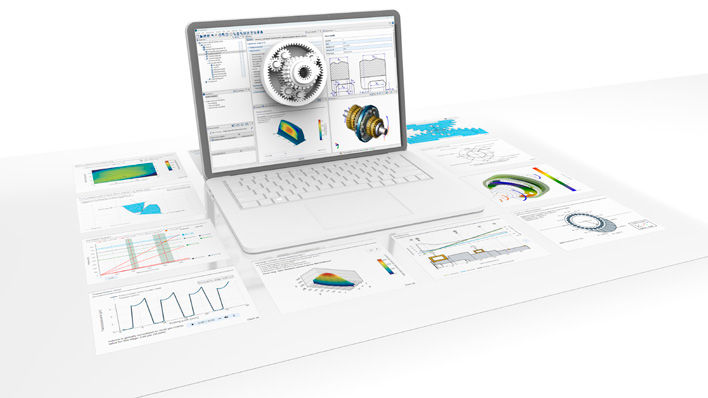FVA–Workbench: The Foundation for Digital Twins
Software offers efficient and user–friendly solution for creating industrial gearboxes
The digital transformation is fundamentally changing the industry, and digital twins play a central role. They enable real-time monitoring of physical systems, simulation of their behavior, and informed decision-making. A dissertation from the TU Darmstadt Institute for Product Development and Machine Elements (pmd) shows how the FVA-Workbench gearbox design software can be implemented as a platform for creating digital twins of industrial gearboxes. The results demonstrate how the combination of detailed modeling, continuous real-time calculations, and engaging dashboard visualization offers an efficient and user-friendly solution for the development of digital twins.
What Is a Digital Twin?
Digital twins of technical systems offer a broad spectrum of potential applications (Attaran and Celik 2023). The term refers to a digital representation of a concrete physical system. In this article, a digital twin is regarded as a digital representation of the physical model with a live data connection. During operation, sensor and operating data is continually recorded and provided to the digital twin. This data serves as input parameters for models which simulate the actual system and describe its behavior. Thus, its behavior can be calculated or simulated live, making it possible to make predictions and draw conclusions (Stark et al. 2020; Czwick et al. 2020; Wilking et al. 2021).
FVA “Digital Twin II” Research Project
The topic of digital twins and their creation is being intensively researched by the TU Darmstadt pmd together with the FAU Erlangen-Nürnberg Engineering Design KTmfk as part of the FVA 889 II—“Digital Twin II” research project. A central component of this project is developing a prototype for a digital twin of a Type X2FS100e two-stage industrial gearbox from SEW-Eurodrive (see image above left). This gearbox is part of a test setup at TU Darmstadt and can be loaded with targeted speed and torque settings. Various sensors are installed in and on the gearbox to record operating data. In this case, the speed and torque are particularly relevant. The measurement data is stored in real-time on a server at TU Darmstadt.
Three Steps to Creating Digital Twins with the FVA-Workbench
The digital description and representation of the gearbox is addressed by modeling and calculation of the gearbox in the FVA-Workbench. This was implemented as part of William Gunawan’s dissertation on “Creation of a Digital Twin through real time integration of the FVA-Workbench” at the TU Darmstadt pmd. The thesis was supervised by Prof. Dr.-Ing. Eckhard Kirchner and Michel Fett. The project can be divided into three steps: modeling the gearbox, establishing live calculations, and visualization in a dashboard. The following is an overview of the project and the knowledge that was gained.
Step 1: Modeling
First, the gearbox was modeled in the FVA-Workbench. The two gear pairs of the two-stage gearbox were used for this purpose. The geometry of the individual gears was described along with the material parameters. This includes, for example, the number of teeth (z), module (m), helix angle (b), tip diameter (da), and reference diameter (d) of the individual gear stages. The three shafts of the gear stages were also described by defining the material parameters, center distances, and geometries of the individual shaft shoulders, among other things. The bearings and the gear oil could be selected as standard components from the FVA-Workbench library. The gearbox casing was not modeled, as CAD data for the casing was not available in the project.
Step 2: Live Calculations
Typical use of the FVA-Workbench involves one-time simulation of the behavior and characteristics of the modeled gearbox and creating a report from the results. However, digital twin functionality requires continuous, cyclically recurring live calculations. This can be achieved using the FVA-Workbench’s scripting feature, which can automate the execution of calculations. To do so, a script was created which uploads the latest measurement data from the sensors mounted in the gearbox to the TU Darmstadt server in 10 second increments. This measurement data includes the current torque and speed values, which are then used as input variables for calculations in the FVA-Workbench. Thus, the current behavior and status of the gearbox are calculated every 10 seconds.







